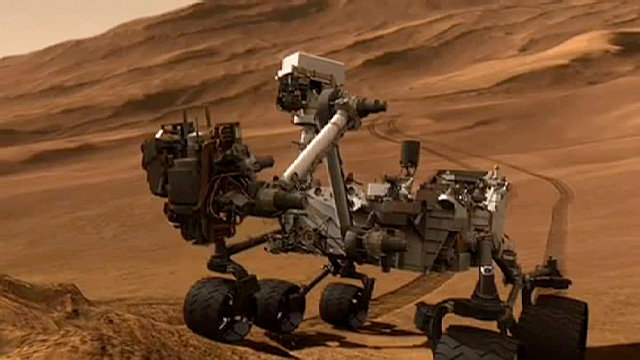
Mars Curiosity Rover
While the first detailed analysis the Mars Curiosity rover confirms that the planet was at one time warmer, and possibly wetter and friendlier to life, findings also show that Mars is losing its atmosphere, reports The Guardian.
After exploring the surface of the red planet for a year, Curiosity’s SAM (Sample Analysis at Mars) instruments finally sent back their first measurements of the planet’s atmosphere, which include argon, nitrogen, oxygen, carbon monoxide and carbon dioxide. The instruments measure gas directly from the atmosphere as well as gases released from solids and calculate the ratios of different isotopes. Isotopes are elements that have the same number of protons, but differ in weight. Lighter isotopes are more common in nature, but Curiosity shows that Mars has a greater ratio of the heavier, meaning that there is a higher rate of atmospheric loss.
Today, Mars’ atmosphere is about one percent of Earth’s.
“When you look at the physics of how atoms escape from an atmosphere, the lighter atoms can escape a little easier,” said NASA scientist Paul Mahaffy. “It’s not a big effect, but if the molecules are lost over billions of years, you start to build up more of the heavy isotopes.”
This isn’t the first time NASA has measured the concentration of the Mars atmosphere, but the first time with more sophisticated instruments.
“Our Curiosity measurements are – for the first time – accurate enough to make direct comparisons with measurements done on Earth on meteorites using sophisticated large instrumentation that gives high-accuracy results,” said Dr. Chris Webster at NASA’s Jet Propulsion Laboratory in Pasadena.
The findings were published in two parallel studies published in the journal Science.